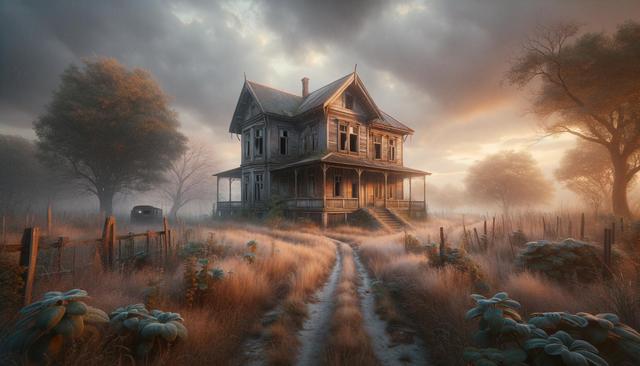The Lifecycle of Abandoned Houses
When a home is left vacant for an extended period, it begins a slow process of decline. Weather, pests, and time take a toll on the structure and its contents. Abandonment often occurs due to various reasons such as foreclosure, the death of the owner, relocation, or legal disputes. Over time, these properties may suffer from structural damage, mold growth, and vandalism. The longer a house remains unoccupied, the more extensive the deterioration becomes. In some cases, the property may be seized by the local government for unpaid taxes or considered a public safety hazard.
Abandoned homes can remain untouched for years, often stuck in legal limbo. During this time, they may become targets for unauthorized entry or illegal dumping. It’s not uncommon for surrounding communities to push for resolution, whether through demolition, rehabilitation, or sale to new owners willing to invest in repairs. The fate of these homes largely depends on their location, current condition, and the interests of potential buyers or developers.
Legal Considerations and Ownership Issues
Before anyone considers entering or purchasing an abandoned house, understanding the legal framework is essential. Ownership of abandoned property is not always clear-cut. Many properties are still legally owned, even if neglected. Trespassing on abandoned property can result in legal consequences, so it’s important to research the title and ownership history through local property records or a real estate attorney.
In some areas, governments offer programs to transfer ownership of abandoned houses through tax sales or land bank initiatives. These programs aim to revitalize neighborhoods and reduce blight. However, acquiring such a property often comes with responsibilities:
- Paying back taxes or fines
- Meeting local building codes and safety standards
- Investing in necessary repairs and maintenance
It’s crucial to conduct a title search and, if possible, obtain a professional inspection to assess the risks and costs of restoring the home. Legal clarity is the first step in transforming an abandoned house into a livable or usable space.
Hidden Stories Behind the Walls
Every abandoned house has its own narrative, often shaped by the people who once lived there. These homes can serve as time capsules, preserving artifacts and memorabilia from a different era. From old newspapers to furniture and family photos, the remnants left behind can provide a glimpse into the daily lives of former occupants. While some homes contain nothing more than debris, others may have historical or architectural significance worth preserving.
Explorers and urban historians are often drawn to such sites for their mystery and storytelling potential. However, it’s important to approach with respect and caution. Documenting and researching these stories can help preserve local history and bring attention to forgotten places. In some cases, communities have turned abandoned homes into:
- Museums or cultural centers
- Community spaces or art installations
- Restored heritage homes
By understanding the past, we can make more informed decisions about the future of these properties.
Risks and Safety Concerns
Entering an abandoned house is not without its dangers. Structural instability is one of the most immediate threats. Floors may be weakened by water damage, roofs may be on the verge of collapse, and support beams could be compromised. In addition to physical hazards, there may be exposure to harmful substances such as asbestos, lead paint, or mold.
Wildlife and insects often inhabit abandoned buildings, and in some cases, squatters may be present. These risks make it essential to take precautions:
- Never enter without permission or legal access
- Use proper protective gear (gloves, masks, boots)
- Bring a flashlight and avoid exploring alone
- Ensure your phone is charged and someone knows your location
For those seriously considering rehabilitation, a professional inspection can identify structural and environmental risks. In many cases, local authorities may require permits or inspections before any work can begin. Approaching abandoned houses with a safety-first mindset helps prevent accidents and legal trouble.
Opportunities for Restoration and Investment
Despite the challenges, abandoned houses can present unique opportunities for restoration and real estate investment. With careful planning and legal due diligence, these properties can be transformed into homes, rental units, or community spaces. Many investors seek out such properties in up-and-coming neighborhoods or areas with revitalization incentives.
Restoring an abandoned home often involves significant labor and financial input, but the rewards can be substantial. Whether the goal is personal use or resale, benefits might include:
- Lower initial purchase cost compared to market-ready homes
- Potential eligibility for tax credits or grants
- Contribution to neighborhood improvement and increased property value
It’s important to set realistic expectations and create a detailed renovation plan. Working with experienced contractors and understanding local zoning laws can streamline the process. While not every abandoned house is a hidden gem, many have the potential to become valuable assets with the right approach.
Conclusion: Seeing the Potential in Forgotten Spaces
Abandoned houses stand at the intersection of mystery and opportunity. For those willing to navigate the legal, structural, and financial complexities, these properties can offer a second chance at life—both for the home and the community around it. Whether driven by curiosity, investment potential, or a passion for preservation, approaching these homes with care, research, and respect is essential. In doing so, we not only uncover hidden stories but also create new ones worth telling.




Leave a Reply